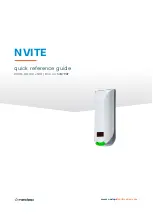
Appendix C: Best Practices
This section describes important concepts which need special attention to achieve a reliable
installation.
Excess Cable Management
During the first prototype system build, it is possible to encounter cable lengths that are too long for
your system. Leaving the excess cable length unmanaged can result in a messy system installation.
If reducing the cable length is not feasible or if there is no time to physically modify the lengths, a
common solution is to wrap the excess cable length in a coil and fasten the wire loop in the cabinet.
This basic tactic has the undesirable effect of creating an air-core transformer which will couple EMI
into the cable extremely well.
The best solution to cable length management is to bundle the excess length in a figure-8 pattern.
This prevents the bundle from turning into an air-core transformer since the direction of current in
one side of the figure-8 turns opposite to the current in the other side. It is recommended to use the
figure-8 method if physically reducing the cable length is not possible.
Figure 65. Excess Cable Management Examples
System Noise
High-power inverters generate a lot of system noise, especially on the DC bus. This is due to the
industry standards for AC harmonics and EMC on the grid-side which require the DC bus to help filter
out the harmful emissions. Unfortunately, that means the battery cells and the High-Voltage BMS
experience extreme levels of noise.
The most harmful emissions on the DC bus are between the DC bus and earth. This is due to the
slew-rate of the switching devices implemented in the inverter (usually IGBTs). The slew-rate is
impacted by many elements, and the emissions can be minimized by carefully grounding the
installation so that the return-path for the high-frequency switching noise can be kept small.
Nuvation Energy High-Voltage BMS - Product Manual
Document ID: NE-PM-003
100
Rev 1.2, 2021-03-03
Curie Update 1






































